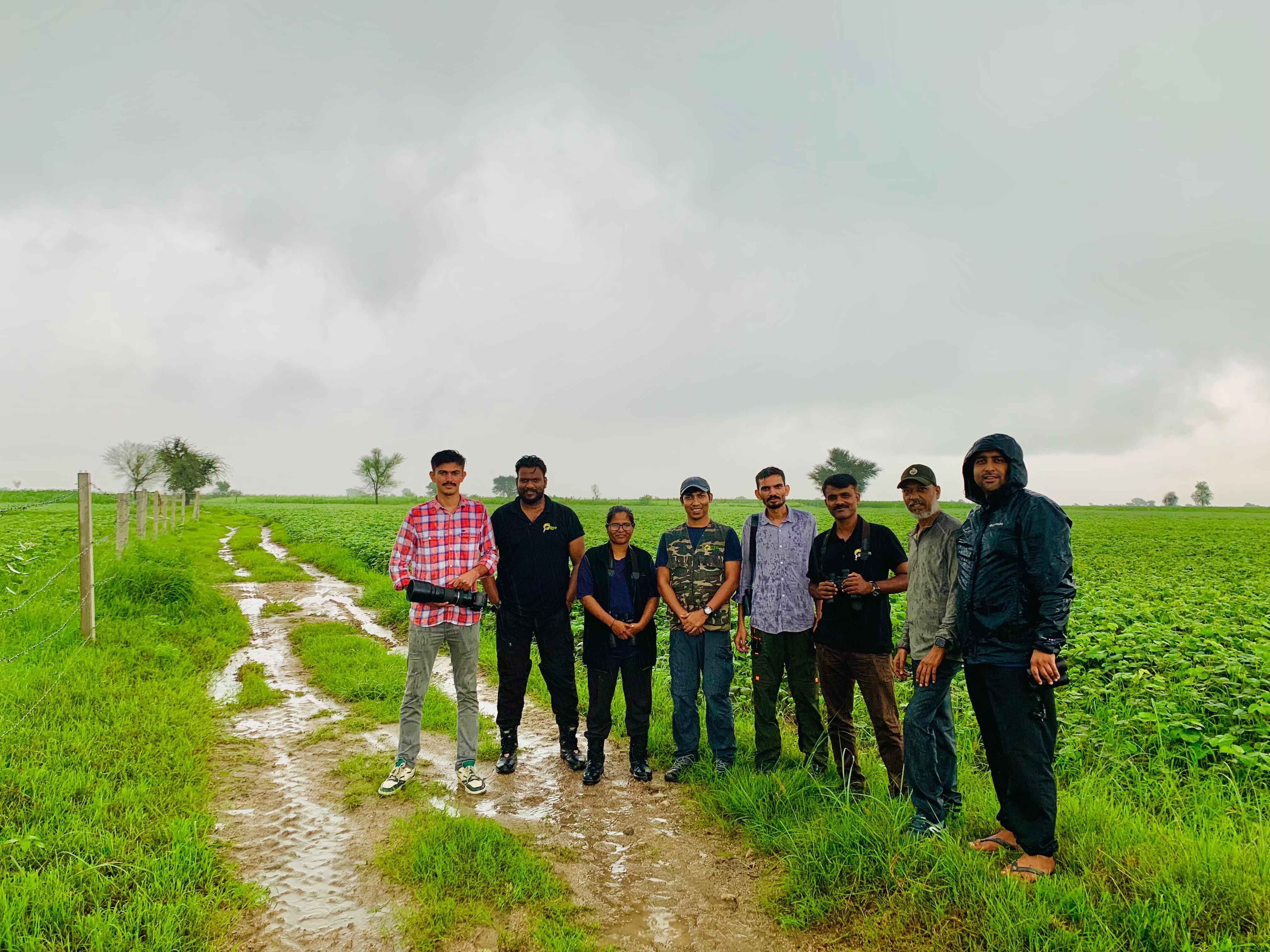Since the 1980s, BNHS has been at the forefront of efforts dedicated to conserving all three species of resident bustards found in India. The groundwork for endangered species programs within Indian grasslands was established by the pioneering ornithologist Dr. Salim Ali. Over the years, this foundation has been further enriched by the contributions of numerous dedicated individuals. Among these was my PhD advisor, Dr. Asad Rahmani, who served as the former Director of BNHS and has played a pivotal role in advancing our understanding and conservation efforts for these remarkable birds. Another notable figure is Mrs. Usha Lachungpa, a member of the BNHS Governing Council, who began her career focused on the bustard and florican programs, significantly influencing conservation strategies. Additionally, Dr Bharat Bhushan, the current secretary of BNHS, conducted his master’s research on the feeding behaviour of the Great Indian Bustard in Solapur, providing critical insights into these species’ ecology and conservation needs.
BNHS’s bustard and florican program has undergone a transformative evolution in the past decade, adapting and improving our techniques and strategies. Many passionate individuals have joined this caravan of conservationists, becoming integral to our mission. Through this blog, I aim to share the inspiring journey of this new generation of grassland warriors of the BNHS, highlighting their dedication, achievements, and collective effort to preserve our precious grassland ecosystems. Their enthusiasm and commitment are truly inspiring as they work tirelessly to protect and conserve these magnificent birds. Join me in celebrating their remarkable efforts and the joy they bring to every project!
Dr. Neelkanth Bora – A Remarkable Journey Of Transformation
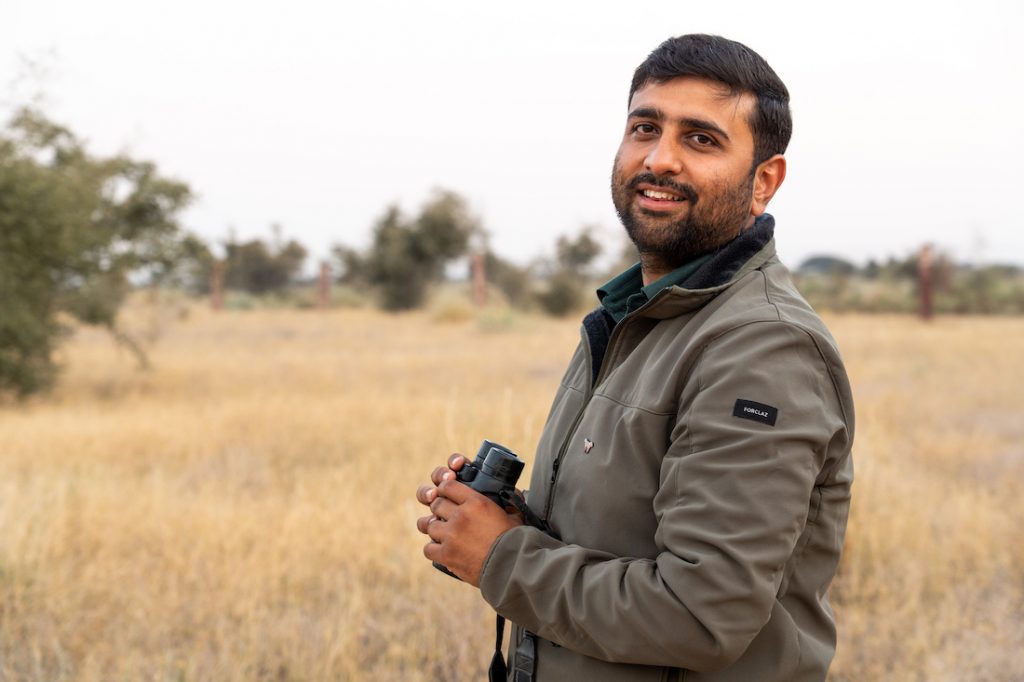
Neelkanth made a remarkable shift in his life by leaving behind a successful medical career to focus on protecting the endangered Great Indian Bustard. His deep commitment to conservation highlights the power one person can have in making a positive change, motivating others to pursue their passions and contribute to the world. Neelkanth is a Programme Officer for the Great Indian Bustard project with the BNHS and is well-regarded for his dedication. Based in Jodhpur, Rajasthan, he thoroughly understands the various challenges in conserving wildlife within the Thar Desert region.
In July 2018, he participated in a nationwide survey to study the critically endangered Lesser Florican, travelling across many landscapes in Maharashtra and Madhya Pradesh. Initially uncertain about how to break into wildlife conservation, he sought advice from experts, who suggested that obtaining a master’s degree in science would be beneficial. For about six months, he gathered information about different courses and options. During a visit to Jodhpur in February 2019, where Neelkanth graciously hosted me, he shared his passion for nature conservation and his desire to switch careers from dentistry to wildlife research. Even though there were not many long-term projects in Rajasthan then, he volunteered for a project focused on the Lesser Florican. He adapted to living in a small rented room in Ramsar village, Ajmer, using a scooter to explore the fields in search of these birds. Since embracing this pivotal transition in his career, Neelkanth has become deeply engaged in initiatives led by the BNHS that focus on conserving two critically endangered bird species: the Lesser Florican and the Great Indian Bustard. His extensive local knowledge, combined with a tireless commitment to environmental preservation, plays an essential role in the success of these vital conservation efforts.
Neelkanth is at the forefront of the BNHS Thar Desert program, which has broadened its scope to include the majestic Great Indian Bustard and extend support for the Demoiselle Cranes and vultures facing threats in their habitats. Under his supervision, the program protects these birds and fosters a deeper understanding of their ecological significance and the challenges they face in a rapidly changing environment. Through community outreach, habitat restoration and targeted conservation strategies, Neelkanth is working to create a sustainable future for these magnificent creatures.
A day in the life of Dr. Neelkanth Bora: Read here.
Rushikesh Pawar – A Passionate Researcher With Tribal Roots
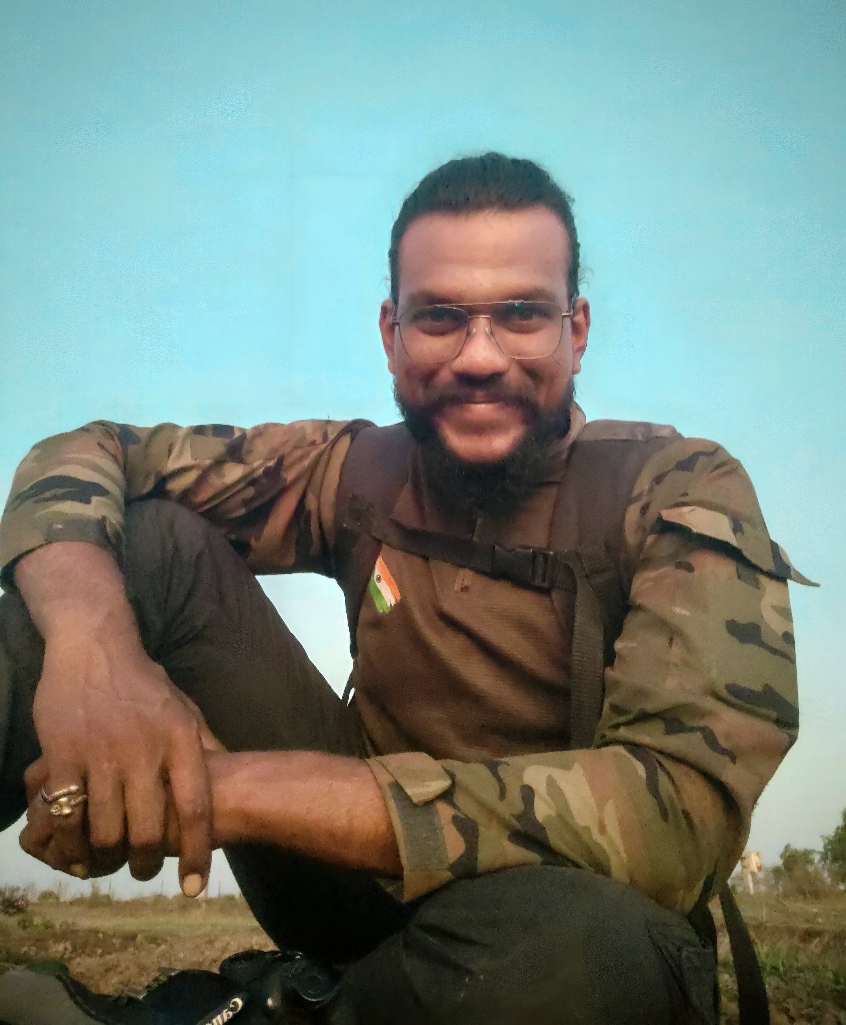
Rushikesh embodies the journey of transformation and dedication. His story reflects a deep commitment to exploration and knowledge as he bridges his heritage with pursuing academic excellence. He is a passionate Senior Project Fellow working on the Lesser Florican in Bidar, Karnataka. He comes from the Ahilya Nagar district in Maharashtra, a region renowned for its historical significance as a stronghold for the Great Indian Bustard. These critically endangered bird species roam the Deccan peninsula. As a proud member of the Bhill tribe, he is deeply connected to the land and its cultural heritage. With a strong desire to make a meaningful contribution to wildlife conservation, he aspires to immerse himself in cutting-edge research that addresses pressing environmental challenges and promotes the protection of endangered species.
With a background in zoology and a keen eye for wildlife photography, he has developed a unique perspective on conservation that blends meticulous research with strong hard work. Initially, he served as a Project Associate for six months on the LF project, after which he was promoted to Project Fellow, showcasing his dedication and expertise. In addition to his current role, Rushikesh has contributed to various conservation initiatives, including the Karanja waterbird and Blackbuck projects in Bidar. His academic pursuits include a PhD focused on Blackbuck conservation, further indicating his commitment to protecting wildlife and grassland ecosystems in the region.
Pankaj Bishnoi – A Pivotal Force In Fostering Community Connections
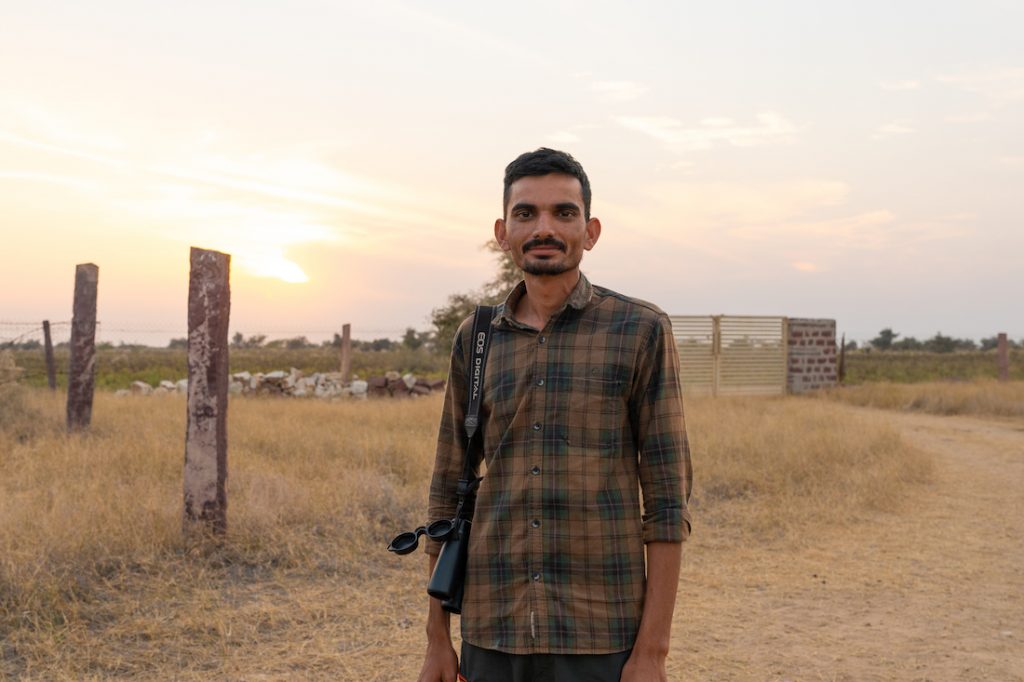
Pankaj is an inspiring Community Engagement Officer (CEO) for the Great Indian Bustard project, deeply connected to the local community of Khetolai, Jaisalmer. His strong relationships with the Bishnoi community and active involvement in the GIB project since February 2020 highlight his pivotal role in fostering community networking and engagement. In 2019, he initially took a passive stance, but during a survey along the powerline from Khetolai to Dholiya, his passion ignited, leading him to embrace an involvement with the BNHS.
Pankaj has played a pivotal role in numerous bird and habitat surveys, demonstrating his deep commitment to conservation. He holds a Master’s degree in Political Science, complemented by basic teacher training, which has equipped him with invaluable skills to enhance educational initiatives, raise awareness, and broaden outreach programs focused on conservation. This expertise significantly amplifies his impact on the project and its goals. With a keen interest in technology, Pankaj is always on the lookout for emerging innovations and advancements from around the globe. His remarkable ability to connect the local community with the latest technological trends enhances conservation efforts, making his contributions unique. Pankaj, an outspoken advocate for environmental issues, never hesitates to express his stance on pressing conservation matters. His initiatives have helped the BNHS establish a remarkable 35-hectare grassland reserve. This area has been generously set aside by a group of Bishnois, who play a crucial role in preserving the habitat for the critically endangered Great Indian bustard. Pankaj’s work supports wildlife conservation and fosters community engagement and collaboration, creating a positive ripple effect in the conservation landscape.
To learn more about BNHS and Bishnoi collaboration, please click the link here.
Sachin Bishnoi – An Inspiring Champion Of Conservation
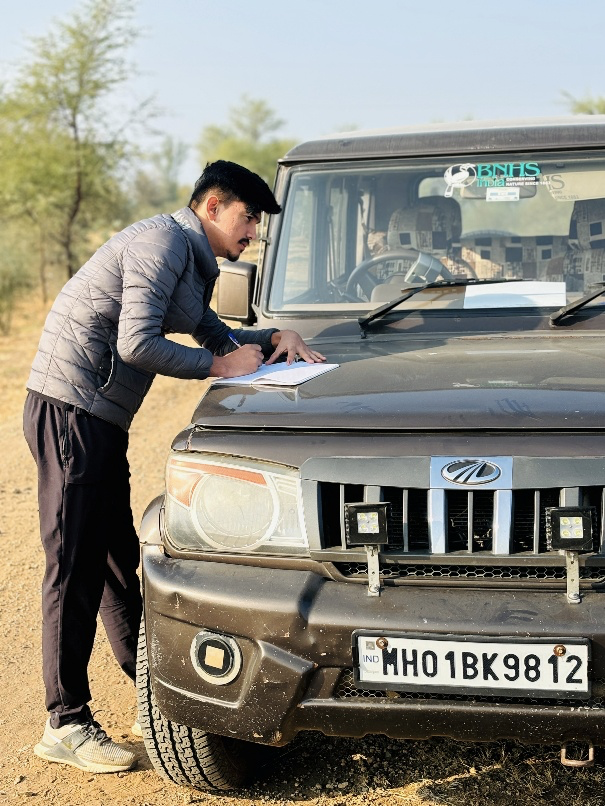
A dedicated Community Engagement Officer (CEO) deeply committed to wildlife conservation, Sachin is actively involved in the Lesser Florican project in Ajmer and Great Indian Bustard conservation in Jaisalmer. His journey in this field began in 2022 when he volunteered for the Great Indian Bustard project. Through this experience, he gained insights and practical skills that have equipped him for his current position. Hailing from the village of Bishnois-Khetolai, he earned a Basic School Teaching Certificate (BSTC), significantly enhancing his approach to community outreach and educational initiatives. His role involves not only the conservation of wildlife but also fostering a sense of stewardship among local communities.
Initially curious about the dynamics of desert life, Sachin began accompanying the team on various field surveys, including a three-month-long stretch in Karnataka and Maharashtra. Over time, he became captivated by the work, developing a profound appreciation for the surveys and the broader conservation efforts. In Rajasthan’s rural landscape, where traditional gender roles often discourage boys from participating in household tasks, Sachin stands out. He observed that every team member, regardless of gender, actively engaged in all aspects of fieldwork and daily activities, a realisation he found inspiring and commendable. Moreover, Sachin has played a vital role in conducting extensive surveys for both bustards and floricans across diverse landscapes in Karnataka, Maharashtra, and Rajasthan, making significant contributions toward the larger goal of wildlife conservation across multiple states. His commitment to the cause and his hands-on approach are pivotal in nurturing a culture of conservation within his community and beyond.
Read about Sachin’s field experience (in Hindi) at the link here.
Rajesh Parmar – Conducting Expedition On Wheels
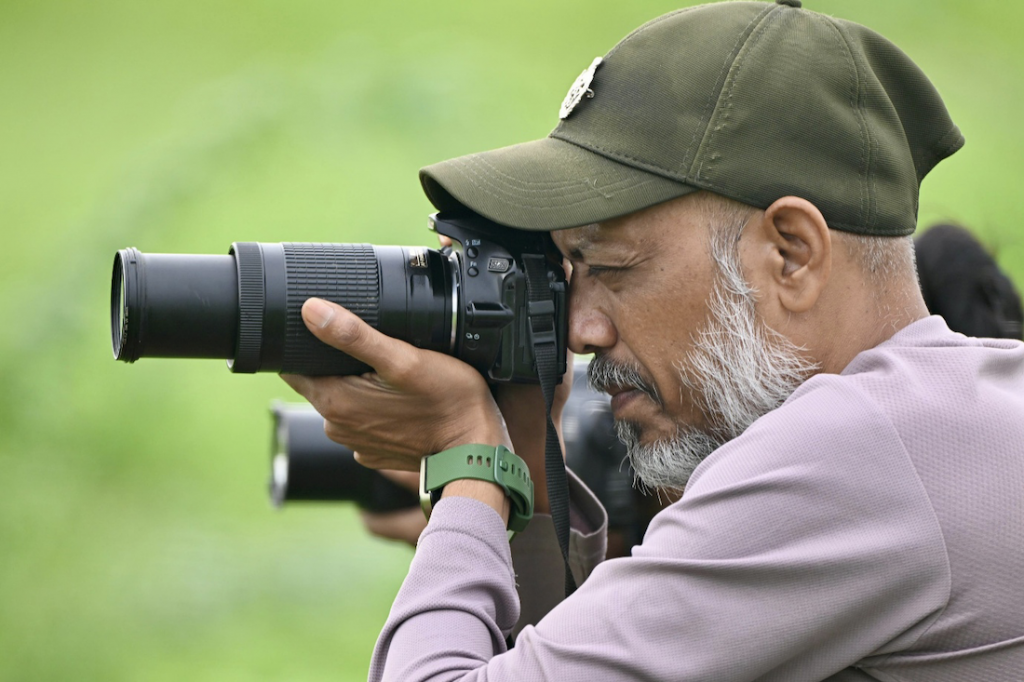
Rajesh is a dedicated field assistant and skilled driver working on the Lesser Florican project based in Ajmer. His journey in conservation spans over a decade, starting in 2007, during which he has engaged in various long-term marine projects that have enriched his understanding and skills in environmental protection. Hailing from the vibrant city of Vadodara, Rajesh has committed several years to the BNHS, where he has participated in diverse surveys and hands-on fieldwork, significantly contributing to the organisation’s mission. Since 2022, Rajesh has taken on a pivotal role in the GIB-LF project, where his insights and unwavering support are invaluable to ongoing conservation efforts. His commitment to the project shines through in the numerous surveys he has been involved in, meticulously assessing the population of the Lesser Florican in the varied landscapes of Karnataka, Maharashtra, and Rajasthan.
Rajesh is not only an exceptional driver—his steadfast focus and calm demeanour behind the wheel are remarkable. During long-distance travel, his driving skills provide such a sense of security that I often can nap or catch up on much-needed sleep. His extensive experience also makes him a vital mentor to the newer generations of staff, helping them grasp the rich historical context and the working environment associated with BNHS. Rajesh’s passion for conservation and dedication to training others stand out, making him an integral part of our team.
Arindam Sinha – A Researcher And A Strong Conservation Advocate

Once a dedicated researcher immersed in science, Arindam Sinha gradually became a passionate conservationist. This shift highlights his evolving commitment to the environment and showcases the profound impact one individual can have in the fight for our planet’s future. A Senior Project Fellow at BNHS, Arindam is an accomplished field biologist whose expertise is centred on the conservation of bustard species, particularly the Lesser and Bengal Florican. Arindam is a native of Islampur, West Bengal, and holds a Master of Science in Environmental Science from Bharati Vidyapeeth in Pune. His professional journey began in 2019 and has included impactful stints with several prestigious organisations, including the Himachal Forest Department and the Zoological Survey of India (ZSI).
Arindam joined BNHS in 2020, where he played a crucial role in groundbreaking conservation research on the lesser florican in Rajasthan. In 2022, Arindam decided to leave BNHS to prepare for an examination that would qualify him for enrolment in a PhD program. However, his passion for conservation drew him back, and by October 2024, he rejoined BNHS, responding to an urgent need for researchers to work in Assam and Arunachal Pradesh. Arindam is currently conducting necessary research focused on conserving the Bengal Florican and other grassland birds in the dynamic floodplains of the Brahmaputra River, specifically in Assam and Arunachal Pradesh. He uses innovative field strategies, including habitat restoration techniques, and actively involves local communities in conservation efforts. This dual approach not only improves the survival prospects of the Floricans but also helps garner community support for conservation actions in non-protected areas.
Aakash Rajuwar – A Dedicated Field Assistant From The Indigenous Community
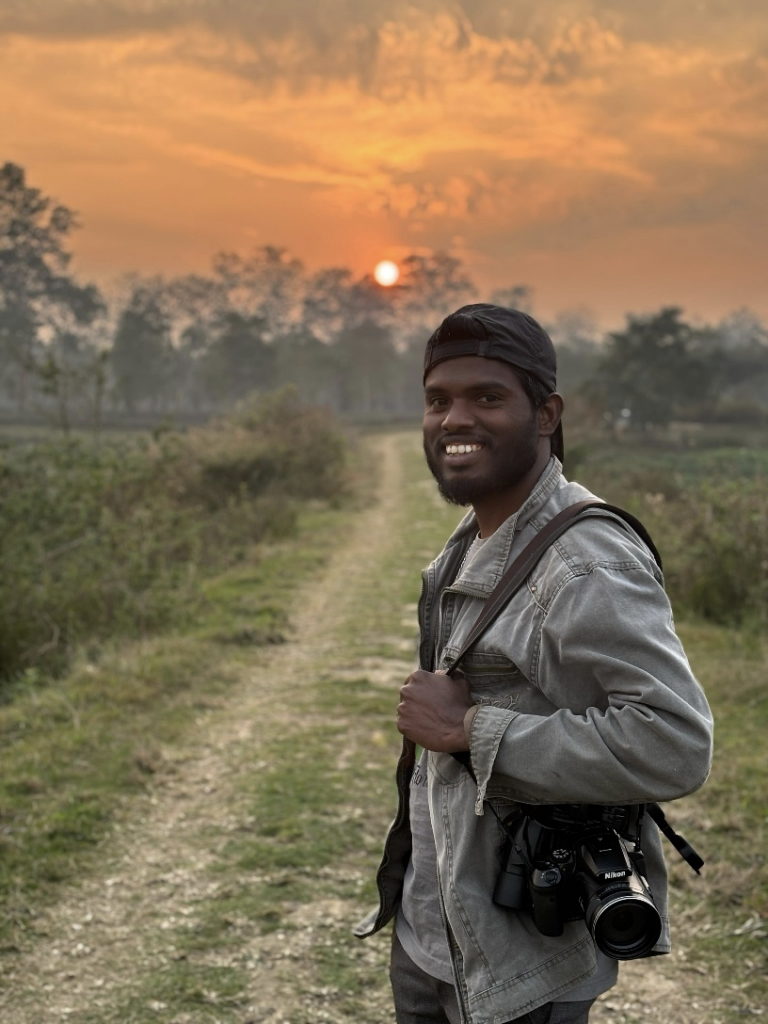
Aakash’s unwavering dedication and fervour for his mission have inspired the people in his community of Bokakhat, Assam, and positioned him as a guiding light for those around him. His enthusiasm and determination are evident in every initiative he leads. Aakash has been actively engaged with BNHS on crucial projects concerning the Bengal Florican and other endangered grassland bird species, which are pivotal to the region’s ecological balance. After an initial engagement period from Sep 2019 to Aug 2022, he rejoined BNHS in November 2024, reaffirming his deep-seated commitment to wildlife conservation.
In his current position, Aakash is dedicated to helping research initiatives that delve into extensive field studies. He is passionate about cooking and often delights us by preparing and serving bamboo-based dishes that showcase local culinary traditions. Aakash also shares captivating stories about his experiences and challenges while working in the tea gardens, where he gained profound insights into the region’s agricultural practices and cultural nuances. His extensive knowledge of the local ecosystems and habitats proves to be an invaluable asset to the BNHS Bengal Florican project, where his experience helps inform conservation strategies and deepen the understanding of the species’ needs within its natural environment.
Former Team Members Who Left A Lasting Mark
A. Mohan – A Conservationist And EIA Consultant
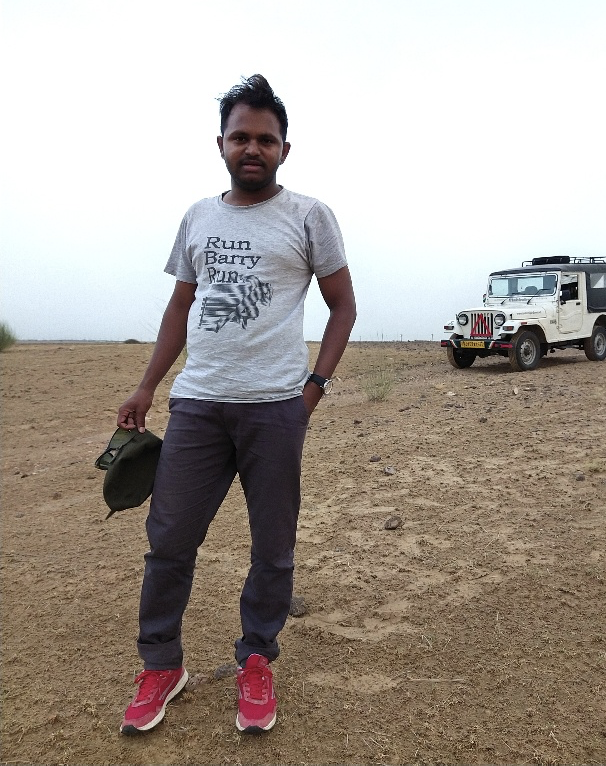
A dedicated conservationist with a fervent passion for environmental protection, he has successfully shaped his commitment to nature into a flourishing career as an Environmental Impact Assessment (EIA) consultant. His professional journey exemplifies a profound dedication to safeguarding grassland habitat while expertly navigating the intricate challenges associated with ecological impact assessments. Originally hailing from Amarlabanda in Telangana, he brings a unique perspective shaped by his roots.
Between 2020 and 2022, he served as a research fellow at the BNHS, where he played a pivotal role in several high-stake conservation projects aimed at protecting critical species such as the Great Indian Bustard and the Lesser Florican, specifically in Rajasthan and Karnataka. His unwavering commitment to avian ecology and the preservation of natural habitats has opened the door to his current position as an ecologist with Deloitte South Asia in Hyderabad. Here, he significantly contributes to various environmental initiatives, leveraging his expertise to promote sustainable practices.
When he received the opportunity to leave BNHS for a position that not only brought him closer to his native village, it was a bittersweet moment. Despite my desire to persuade him to stay, I understood the necessity of this opportunity for him. His departure marked the end of a significant chapter, but his journey reflects the essence of progress for himself and the conservation efforts he is passionate about.
Unmesh Mitra – A Brilliant Researcher Navigating The Depths Of Science For Conservation
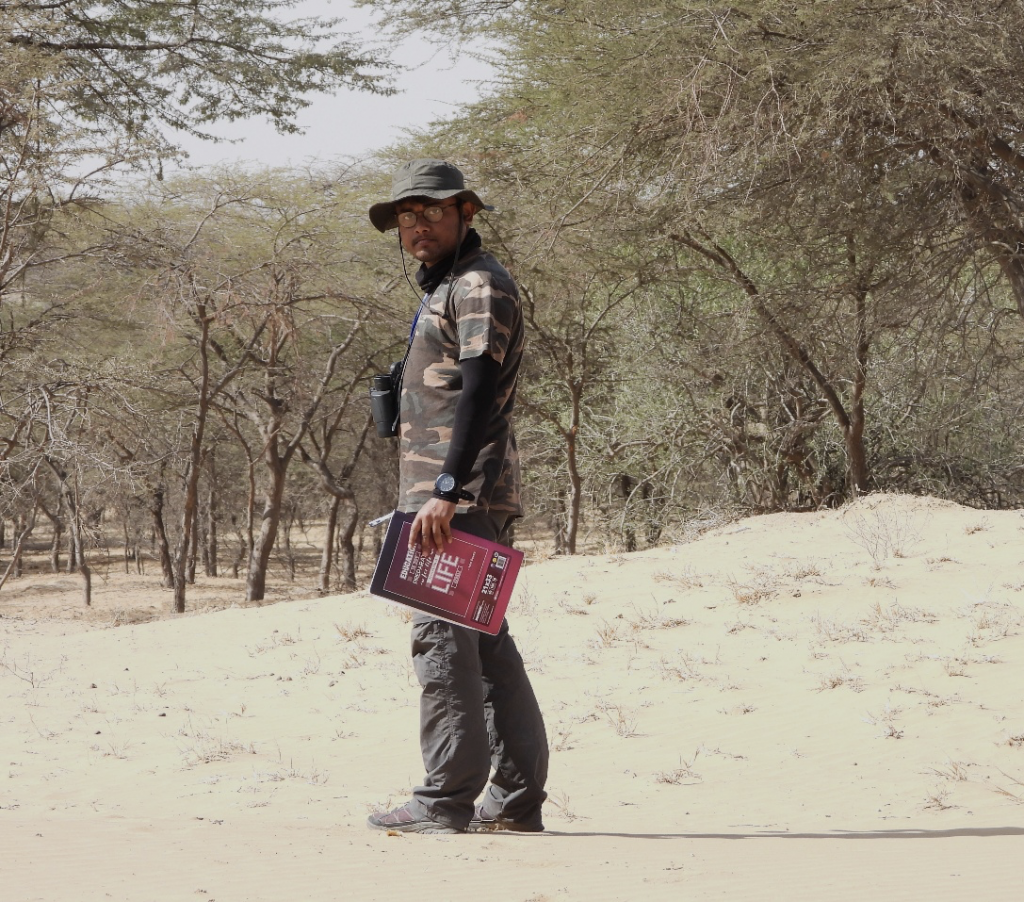
From 2020 to 2022, Unmesh played a pivotal role in the ambitious Great Indian Bustard project of BNHS based in the arid landscape of Jaisalmer, Rajasthan. His work involved navigating the region’s rugged terrain, where he developed innovative methodologies to enhance the study of desert wildlife. His impressive GATE score showcased his academic prowess and qualified him for the BNHS PhD program, where he focused on the intricate behaviours and ecological roles of larks, a group of birds known for their melodious songs and distinct habitats.
Despite his promising academic journey, he often became trapped in the intricate maze of his thoughts, where his relentless introspection sparked both creative ideas and confusion. Driven by a strong desire for immediate results, he struggled with the slower progress typically associated with wildlife conservation efforts. This tension between his aspirations and the reality of conservation timelines led him to temporarily step back from his research activities, seeking a pause to recalibrate his focus and regain a sense of purpose.
Nevertheless, his extensive experience in conservation research proved invaluable, enabling him to transition into a new role as an Assistant Manager at Iora Ecological Trust in 2024. In this capacity, he effectively harnesses his knowledge and skills to advance diverse ecological projects and initiatives, contributing meaningfully to preserving biodiversity and promoting sustainable practices in wildlife conservation.
Balasaheb Lambture – A Passionate Researcher Dedicated To His Roots
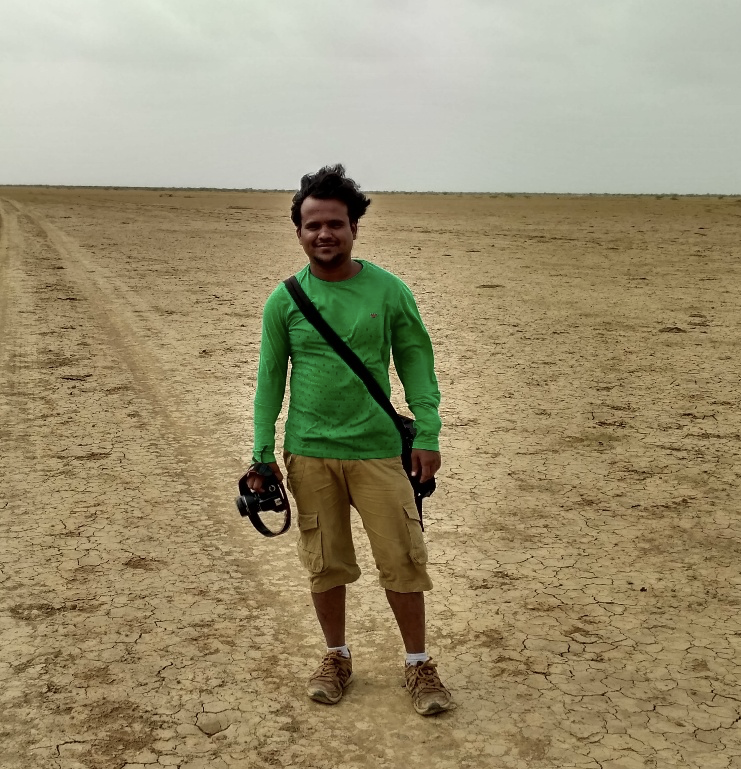
Hailing from a marginalized community in Solapur, he dedicated himself to conservation efforts as a research fellow in the Bustard Program of BNHS from 2015 to 2016. In addition to his scientific pursuits, he is also a talented artist, creating intricate sculptures and captivating paintings that often reflect his passion for wildlife. As a wildlife photographer, he captures the beauty and essence of nature through his lens. He frequently explored the Nannaj-Mardi bustard area on his bicycle, immersing himself in the local landscapes and finding inspiration in the region’s rich biodiversity.
At BNHS, he focused on conserving the Great Indian Bustard in the Solapur region. In 2017, he participated in a comprehensive nationwide survey of the Lesser Florican, conducting fieldwork across Rajasthan and Gujarat to better understand this critically endangered species’ distribution and habitat needs. His efforts also extended to habitat restoration projects aimed at supporting the Bengal Florican population in the Dudhwa and Pilhibit Tiger Reserves in Uttar Pradesh, where he worked to assess the impact of habitat restoration on grassland birds such as the Bengal Florican.
When BNHS shifted its focus to bustard and florican conservation in Rajasthan in 2018, he decided to pursue a PhD at Punyashlok Ahilyadevi Holkar Solapur University under the BARTIS fellowship, also known as the Dr Babasaheb Ambedkar National Research Fellowship (BANRF). There, he is engaged in detailed research on various species of larks, contributing to the understanding of their ecology and conservation needs.
Vikas Pisal – An Exceptional Companion In The Field
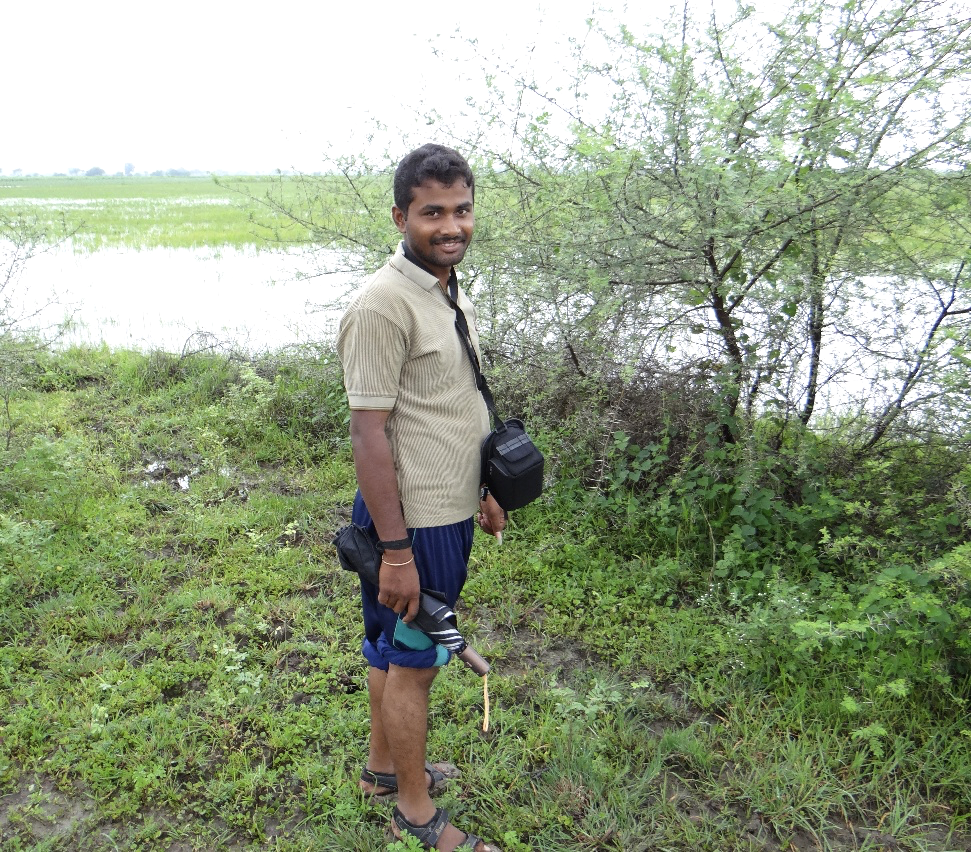
Vikas is known for his dynamic and engaging personality, which sets him apart as a skilled driver and an invaluable field assistant who plays a crucial role in realizing our collective mission. Hailing from the Umbraj in Satara, Sahyadri ranges, a place steeped in history and known as the home of the legendary Maratha warrior Subedar Tanaji Malusare, Vikas brings a sense of pride and dedication to his work.
He embarked on his journey with the BNHS in April 2012, and soon after, we set off for Chandrapur during the peak of summer. The sweltering heat was challenging, but I quickly discovered that Vikas was not just any young boy; he was an exceptional companion for fieldwork, displaying enthusiasm and camaraderie that made even the toughest days enjoyable. At that time, we faced a shortage of personnel and found ourselves frequently travelling between Mumbai and Solapur, then on to Chandrapur and back, a gruelling routine that lasted nearly six months.
In 2017, BNHS strategically focused on Rajasthan for its bustards and florican program, prompting Vikas to remain in Mumbai. Vikas has an exceptional eye for detail, which enabled him to excel as a bird watcher. His skill in spotting and identifying various bird species has been invaluable, especially in several vital projects on waders in the Mumbai suburbs. He has become a crucial asset for researchers, demonstrating a quick grasp of field challenges due to his extensive experience. His willingness to assist others and share his knowledge makes him an effective collaborator, ensuring that projects run smoothly and efficiently. Since 2024, he has been affiliated with other organisations.
Chandraprakash Prajapat And His Family – Champions Of The Lesser Florican Project
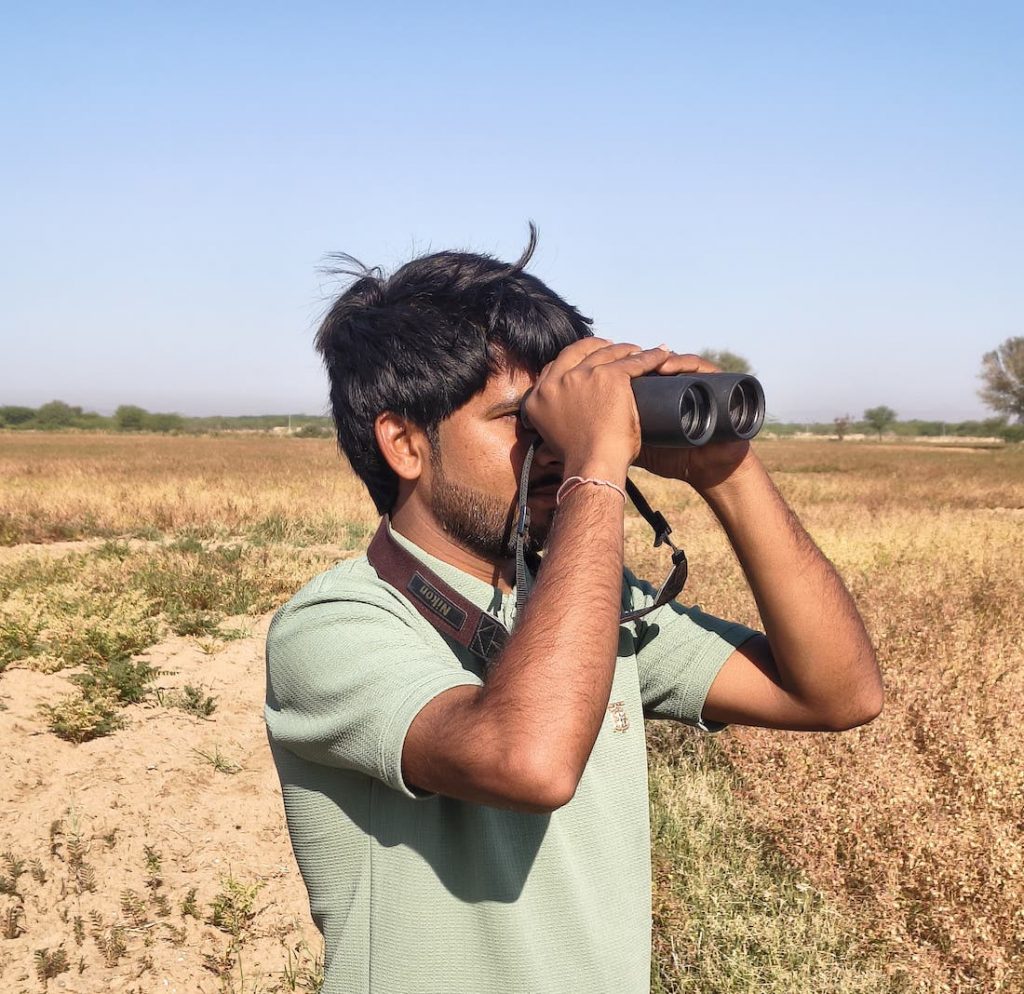
In 2019, the BNHS Lesser Florican Project was in its foundational phase, and it was the Prajapat family, led by Nathulal Kumhar from the village of Madhopura within the Gram Panchayat Shokaliya in Ajmer, who stepped up to lend their unwavering support. Their deep-rooted connection to nature and genuine passion for conservation drove them to contribute to this significant initiative. In January of that same year, the Prajapat family graciously offered the BNHS team a week-long stay at their home, showcasing their hospitality and commitment to the cause.
During this immersive experience, a young and educated family member, Chandraprakash, became an invaluable asset to the BNHS team. His enthusiasm for nature and keen observational skills shone during his time spent with the researchers, where he eagerly shared insights and experiences from his life in the surrounding landscape. His pivotal role extended beyond mere companionship; he was instrumental in setting up a small base camp in the village of Ramsar, located near Nasirabad in Ajmer. Chandraprakash’s efforts were crucial in fostering a sense of trust and acceptance among the local community in Shokaliya. Thanks to his efforts, residents not only welcomed the BNHS presence but also began actively sharing vital information about the Lesser Florican populations in their fields. His dedication was evident as he would venture into the fields at dawn and remain until dusk, meticulously documenting the area’s natural history. This hands-on involvement greatly enriched the project, yielding comprehensive data that was instrumental in conservation efforts.
In 2023, after four years of impactful engagement with the BNHS, Chandraprakash received an appealing offer from another institute. With a heart full of cherished memories from his time with the project, he bid farewell to the BNHS team, leaving behind a legacy of collaboration and commitment to preserving the Lesser Florican’s habitat. His father is still associated with the BNHS, a Kharmor mitra (a friend of florican).
Dr. Sujit Narwade – Writer Of This Blog, Team Lead Of BNHS Bustard And Florican Program And Deputy Director Of BNHS
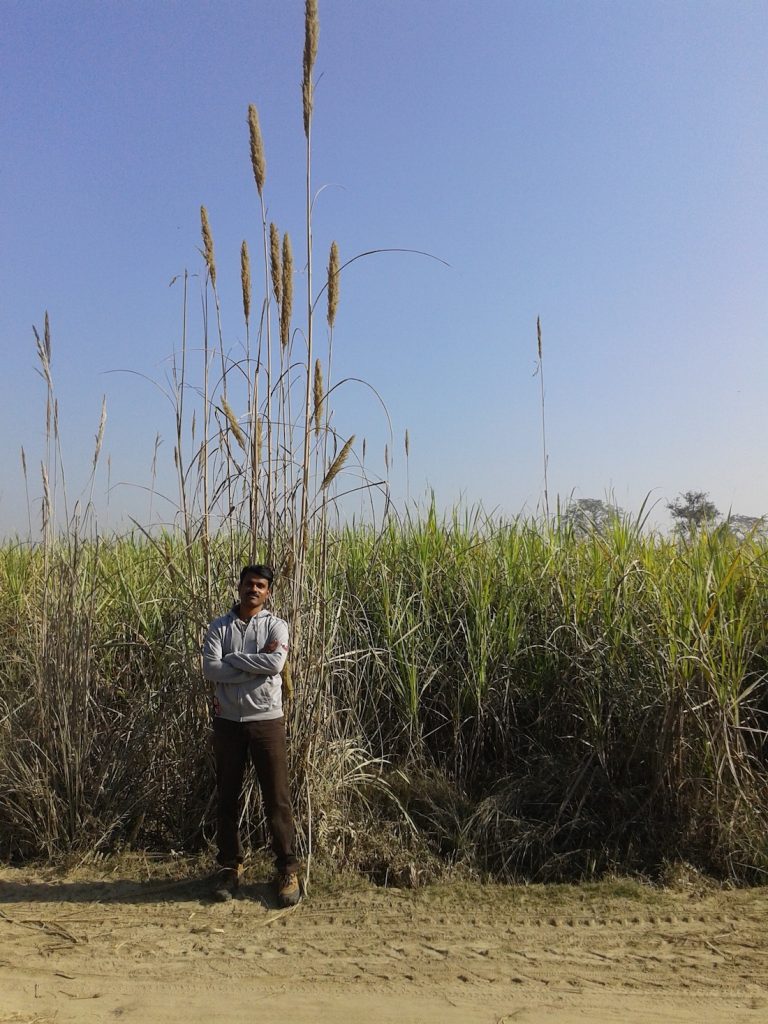
To know more about Dr. Narwade’s work, please click here: Dr. Sujit Narwade

